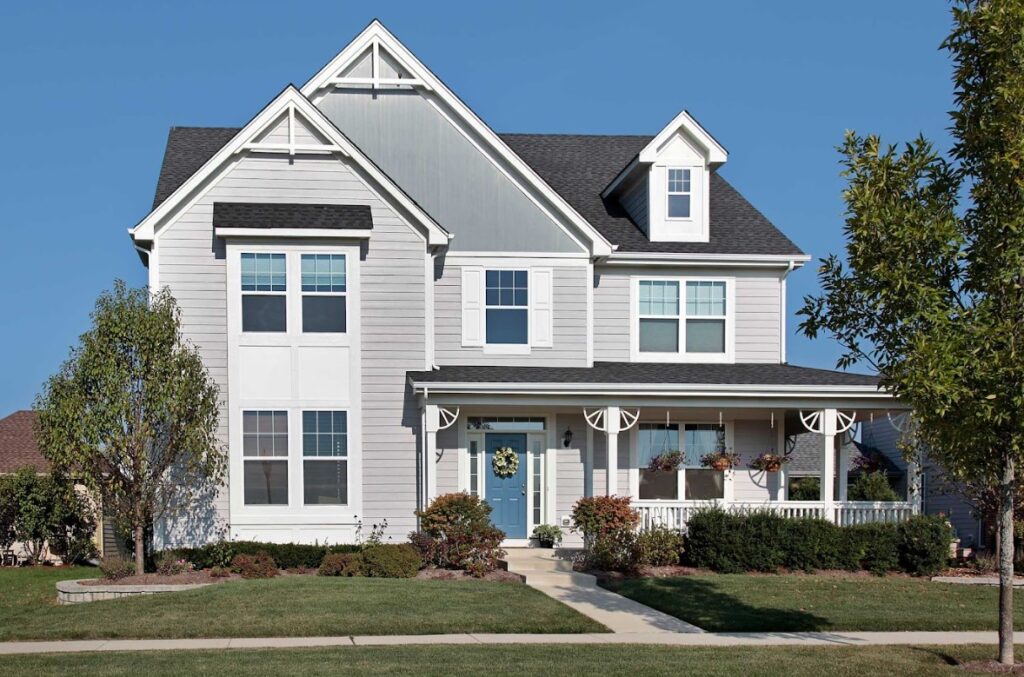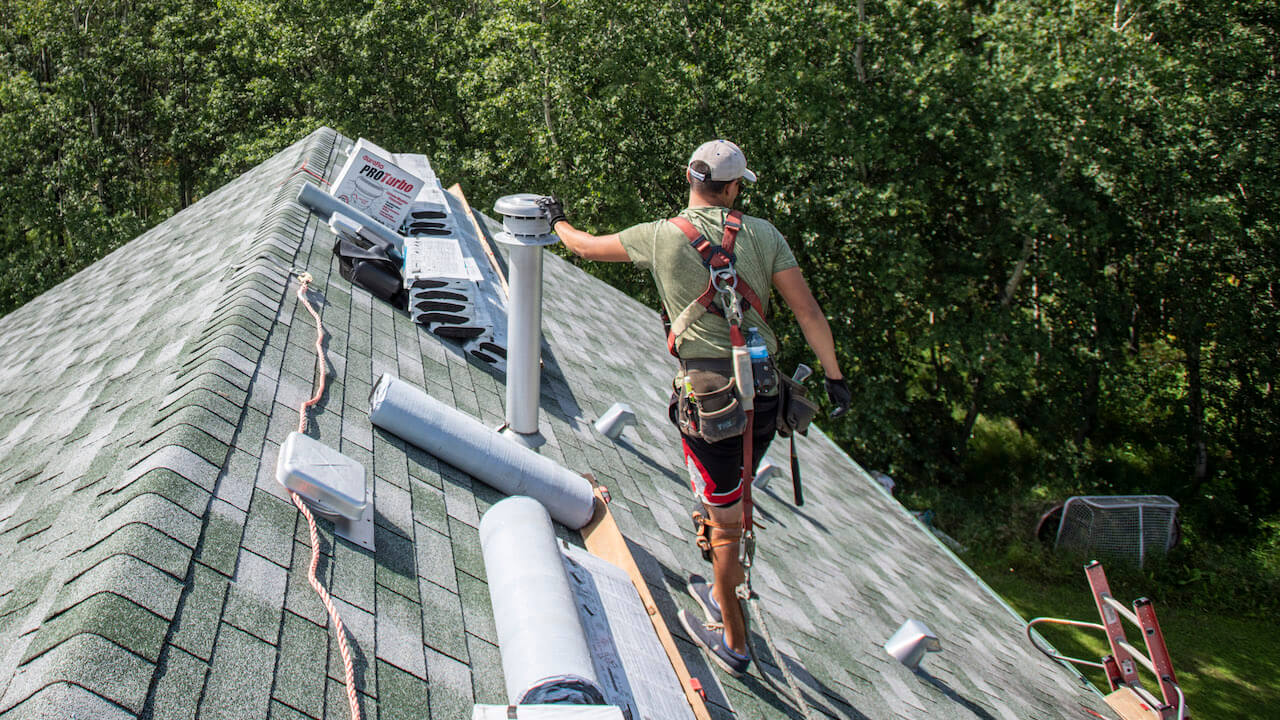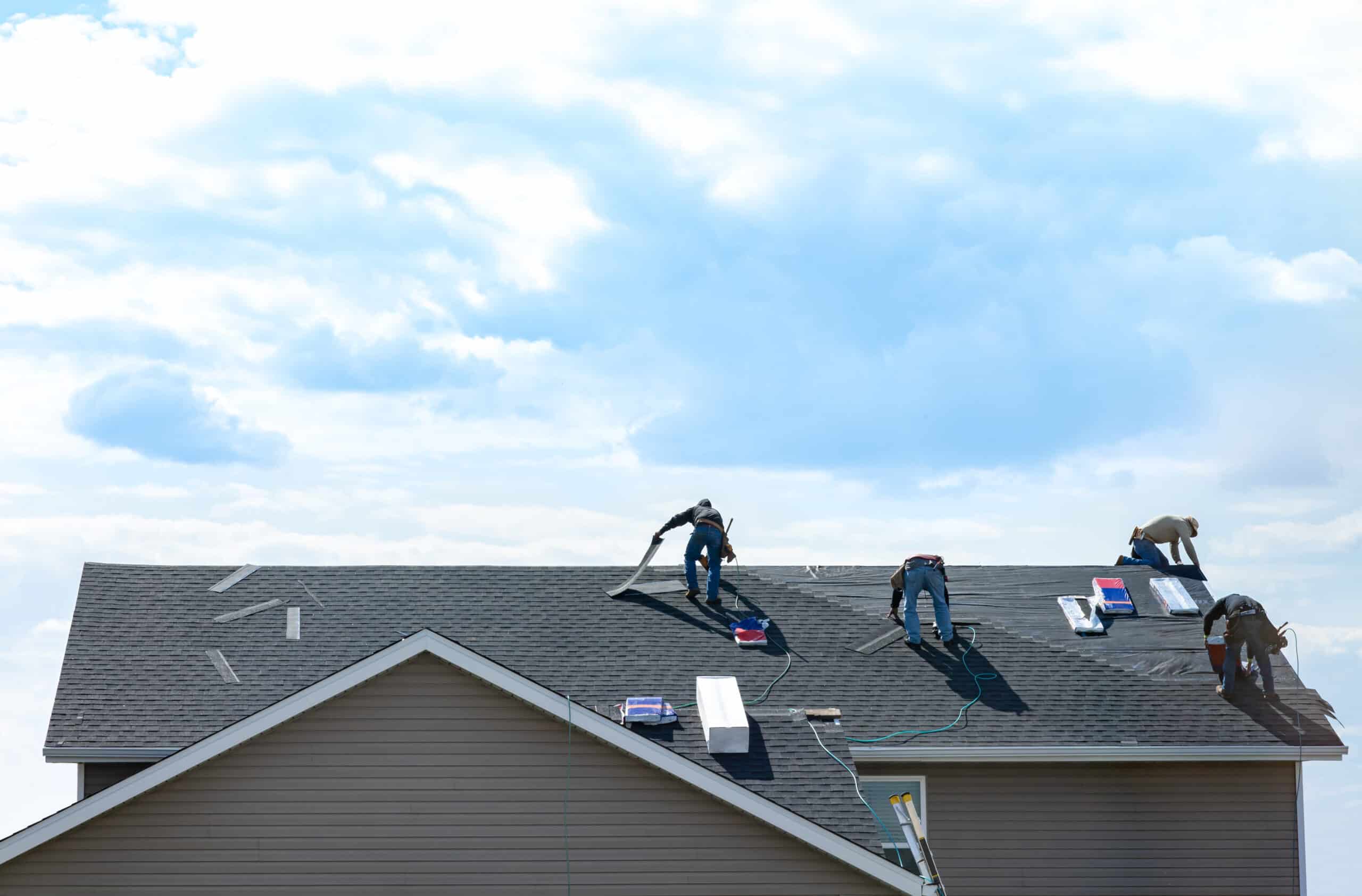All Categories
Featured
Table of Contents
- – Types of Roofing Materials Used
- – Typical Roof Products Described
- – Picking the Right Product: What Matters?
- – Material Contrast at a Glance
- – Vital Security Procedures for Roofers
- – Guarding Versus Falls and Slips
- – The Undetectable Threats: Weather and Product...
- – Individual Experience in Practice
- – Quick Referral Table: Security Equipment Must...
- – Training and Accreditation: The Bedrock of Pro...
- – Core Components of Roofing Training
- – Why Accreditation Matters Beyond Compliance
- – Specialist Tips for Aspiring Roofers
- – Vital Roof Techniques and Precision Tools
- – Techniques That Make a Distinction
- – Expert Insights in Action
Types of Roofing Materials Used
When you believe about the roofing system over your head, have you ever stopped to question what stories the shingles or tiles could inform? Roof materials, chosen by knowledgeable roofers, are far more than simple shelter elements-- they paint an image of climate, culture, and workmanship. From the rugged texture of asphalt to the streamlined shimmer of metal, each product carries its own tale.
Typical Roof Products Described
Flat Roof Repair Replacement In Fork MDFlat Roofing Companies Fork MD
Local Flat Roofers In Fork MD
Fork MD Roof Repair
Fork MD Flat Roofing
Not all roof materials are developed equivalent. Some whisper tales of sturdiness, others boast eco-friendly virtues, while a couple of stand as monuments to visual appeal. Here's a quick rundown of the most common types:
- Asphalt Shingles: The workhorse of roof-- budget-friendly, flexible, and extensively utilized. They resemble the reliable boots of a roofing contractor, reputable in a lot of weather.
- Metal Roofing: Sleek, contemporary, and exceptionally long lasting. It's the armor that safeguards buildings through decades of storms and sunshine.
- Clay and Concrete Tiles: Typically found on Mediterranean-style homes, these tiles resemble timeless sculptures-- heavy but attractive, with a lifespan that rivals a century.
- Wood Shingles and Shakes: For those who choose a rustic, natural appearance, wood roof includes warmth however demands more care and knowledge from roofing contractors.
- Slate: The aristocrat of roof products, slate's natural stone provides elegance but needs knowledgeable hands to set up effectively.
Picking the Right Product: What Matters?
Is it purely about toughness, or does design tip the scales? Sometimes, the decision seems like picking a preferred kid-- each material uses unique benefits. Roofing contractors often weigh factors such as:
- Climate Compatibility: Will the product stand up to rain, snow, or blazing sun?
- Setup Complexity: Some products, like slate, need workmanship developed over years.
- Environmental Effect: With rising consciousness, options like recycled metal or sustainably sourced wood gain appeal.
- Visual Harmony: The roof material should sing in tune with the home's architecture.
Material Contrast at a Glance
| Material | Toughness | Expense Range | Setup Difficulty | Ecological Impact |
|---|---|---|---|---|
| Asphalt Shingles | 15-30 years | Low | Easy | Moderate |
| Metal Roofing | 40-70 years | Medium | Moderate | High (recyclable) |
| Clay Tiles | 50-100 years | High | Hard | Low |
| Wood Shingles | 20-40 years | Medium | Moderate | Moderate |
| Slate | 75-200 years | High | Extremely Difficult | Low |
In the end, the choice of roofing material is a dance between practicality and enthusiasm. The roofing contractors - Flat Roof Baltimore in Fork MD who lay these materials down bring technical ability and an artist's eye, crafting not just defense however a long lasting tradition for the home below
Vital Security Procedures for Roofers
Ever felt the vertigo creeping in as you climb that ladder? That's the silent reminder that roof security isn't simply a checklist-- it's survival. The roofing is a location where one mistake can turn a routine task into a catastrophe. From the moment you step onto a shingle, the threat of falling looms large, however there are ways to tame that threat.
Guarding Versus Falls and Slips

Ask any experienced roofing contractor: the most frequent hazard is falling-- either from edges or through vulnerable points. The instinct to rush can be a quiet adversary. Here's a professional rundown to keep you steady:
- Use harnesses with correct anchor points ranked for vibrant loads.
- Examine every ladder for stability and safe and secure footing before rising.
- Wear shoes with non-slip soles created particularly for roofing surfaces.
- Stay alert for damp or icy patches that can turn a solid action into a slip.
The Undetectable Threats: Weather and Product Handling
Have you ever contemplated how quickly a sunny day can end up being a rooftop danger zone? Strong winds can turn loose tools into dangerous projectiles. Handling roofing materials like shingles or metal sheets demands not simply muscle however mindfulness. Keep these ideas close:
- Anchor tools and materials when not in use to prevent them from sliding off.
- Set up work during calm weather condition windows; wind gusts above 20 miles per hour are a red flag.
- Use gloves developed to improve grip and protect against sharp edges.
- Examine roofing decking stability before stepping to prevent unforeseen breaks.
Individual Experience in Practice
On one vigorous autumn early morning, a colleague ignored a weak spot concealed beneath old shingles. The resulting fall was a stark lesson: never ever trust what looks solid without a comprehensive check. Since, a "tap test" with the hammer before placing weight has actually been my routine, revealing surprise rot or damage undetectable to the eye.
Quick Referral Table: Security Equipment Must-Haves
| Equipment | Function | Professional Pointer |
|---|---|---|
| Full-body Harness | Fall arrest and prevention | Double-check buckles and webbing for wear before each usage |
| Roof Boots | Slip resistance and foot defense | Pick boots with aggressive tread and water resistance |
| Construction hat | Head impact defense | Replace after any considerable effect, even if no damage shows up |
| Gloves | Grip and hand protection | Go with gloves with strengthened palms and flexibility |
- Review of CRG Roofing and Siding in Fork MD by Jen Prox: Very pleased with the service I received from the beginning to the end of my roof replacement project. Jason was very helpful in explaining the process and options as well as working with my insurance company. The crew did a fantastic job removing the old layers and then putting on the new roof. Very pleased with my new roof and they also did a fantastic job cleaning up after. Would definitely recommend CRG. ""
- Review of CRG Roofing and Siding in Fork MD by Michele Ball
Training and Accreditation: The Bedrock of Proficient Roofing Contractors
Ever question why some roofers seem to defy gravity, nailing shingles with accuracy while others fail? The secret depend on rigorous training and targeted certification. Hands-on experience alone will not cut it-- training programs are crafted to imitate the unforeseeable nature of roofing work, from sudden weather condition modifications to vulnerable substrates.
Consider this: a roofing professional when shared how an unforeseen gust almost turned a day's work into a catastrophe. Years of training started-- appropriate anchoring methods, fast decision-making-- preventing injury and safeguarding the roof's integrity. That's the real worth of certification; it's not just paper, it's a survival toolkit.
Core Components of Roofing Training

- Safety protocols tailored to regional policies and real-world situations
- Product science-- comprehending how different roof products respond to aspects
- Setup methods that vary by roofing system type, pitch, and style complexity
- Analytical drills including water intrusion and structural stress
- Use of innovative tools and digital measurement systems
Why Accreditation Matters Beyond Compliance
Isn't it curious how a main certificate can enhance a roofing professional's trustworthiness, yet its true power is frequently neglected? Certification signals mastery, but it likewise demands continuous learning. Many programs require regular renewals, making sure roofers stay current with evolving market standards and ingenious materials.
Specialist Tips for Aspiring Roofers
- Seek training that includes both class theory and comprehensive fieldwork
- Practice utilizing different roof materials-- what works on asphalt shingles will not on metal or slate
- Focus on learning fall defense systems; they're lifesavers more than simply guidelines
- Network with licensed roofing contractors-- mentorship accelerates skill acquisition
- Frequently review local building regulations; they're the quiet structure directing your every nail
Would you trust your home's shelter to someone who skips this critical action? The roofing isn't simply a cover; it's a complex system requiring respect, skill, and above all, appropriate training and accreditation.
Vital Roof Techniques and Precision Tools
Fork, Maryland is an non-incorporated community located in St. Mary’s County, in the south part of the state. Geographically, it is positioned at approximately latitude 38.3687° N and longitude 76.6003° W. The community is close to the intersection of Maryland Route 5 and Route 245, providing easy transportation connections to nearby towns and the Chesapeake Bay area. Fork is defined by its rural and suburban mix, with a population that reflects the overall demographics of St. Mary’s County, which as of the 2020 census, had approximately 113,000 residents. The area is mainly residential with a strong presence of single-family homes, agricultural land, and natural wooded areas, contributing to its quiet and scenic environment. The median household income in St. Mary’s County is about $85,000, with a diverse demographic composition including a majority White population, followed by African American and smaller percentages of Hispanic and Asian residents. Points of interest near Fork include the St. Mary’s River State Park, which offers hiking trails, fishing, and boating opportunities. The community is also adjacent to historic sites such as St. Mary’s City, the first colonial settlement in Maryland, offering rich cultural and educational experiences. Additionally, the nearby Patuxent River Naval Air Station affects the local economy and population, with many residents employed in defense and aerospace sectors. Education in Fork is part of the St. Mary’s County Public Schools system, which includes several highly-rated elementary, middle, and high schools. The area enjoys a relatively low crime rate and community-oriented living. Recreational opportunities are plentiful with access to local parks, golf courses, and waterways, making Fork, MD, an desirable location for families and outdoor enthusiasts alike.
Ever wondered why some roofings stand up to the rage of storms while others fail? The answer lies deep in the mastery of roof techniques and the tools wielded by proficient roofing contractors. Take, for circumstances, the art of shingle positioning. It's not practically laying shingles in cool rows; it's about comprehending the subtle play of wind, rain, and sun exposure. Misaligned shingles can invite leaks, which typically sneak in undetected till the damage is permanent.
When it concerns tools, a roofer's toolbox is a treasure chest of precision instruments. The humble roofing hammer isn't simply for pounding nails-- it's created with a magnetic nail holder that accelerates work on steep slopes, keeping security and performance in harmony. And after that there's the chalk line tool, a simple string that marks perfectly straight lines. Without it, even the most skilled roofing contractor may have a hard time to keep symmetry throughout a vast surface.
Roofing Company In Fork MDNew Roof Replacement In Fork MD
Commercial Flat Roof Contractors In Fork MD
Flat Roofer Fork MD
Flat Roof Replacements In Fork MD
Techniques That Make a Distinction
- Step flashing: Important for sealing joints between roof and vertical surface areas like chimneys or walls, avoiding water ingress in those susceptible areas.
- Ice and water guard setup: Applied below shingles at eaves and valleys, this membrane defend against ice dams and wind-driven rain.
- Proper nailing patterns: Not all nails are developed equivalent, and neither are their placements. Too couple of nails, or improperly put, can cause shingles to loosen up too soon.
Expert Insights in Action

One remarkable task included a steep-pitched roofing where conventional ladder access was difficult. Using a roof harness system and specialized roofing jacks, the group worked securely on near-vertical surface areas, a testimony to how security equipment changes intimidating tasks into manageable ones. Have you ever stopped briefly to consider just how much the ideal tool can enhance both quality and spirits on a job site?
| Tool | Purpose | Pro Suggestion |
|---|---|---|
| Roof Hatchet | Driving nails, cutting shingles | Utilize the hammer side to tap carefully to prevent splitting shingles |
| Utility Knife | Cutting roofing products | Modification blades regularly to ensure tidy cuts |
| Air Nailer | Quick and consistent nailing | Check air pressure regularly to prevent over-penetration |
Table of Contents
- – Types of Roofing Materials Used
- – Typical Roof Products Described
- – Picking the Right Product: What Matters?
- – Material Contrast at a Glance
- – Vital Security Procedures for Roofers
- – Guarding Versus Falls and Slips
- – The Undetectable Threats: Weather and Product...
- – Individual Experience in Practice
- – Quick Referral Table: Security Equipment Must...
- – Training and Accreditation: The Bedrock of Pro...
- – Core Components of Roofing Training
- – Why Accreditation Matters Beyond Compliance
- – Specialist Tips for Aspiring Roofers
- – Vital Roof Techniques and Precision Tools
- – Techniques That Make a Distinction
- – Expert Insights in Action
Latest Posts
New Roof in Savage MD: Professional Providers For Bring Back And Preserving Level Roofing Surfaces Ensure Durability And Defense
Roofings in Glen Arm MD: Specialist Flat Roof Restoration Services Guarantee Resilience And Security For Your Organization Home
Flat Roof Contractors in Boring MD: We Specialize In Installing New Low-Slope Roof For Residences And Services
More
Latest Posts
New Roof in Savage MD: Professional Providers For Bring Back And Preserving Level Roofing Surfaces Ensure Durability And Defense
Roofings in Glen Arm MD: Specialist Flat Roof Restoration Services Guarantee Resilience And Security For Your Organization Home
Flat Roof Contractors in Boring MD: We Specialize In Installing New Low-Slope Roof For Residences And Services